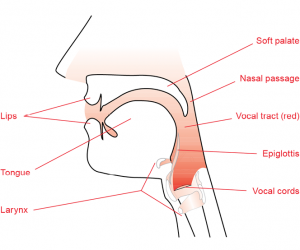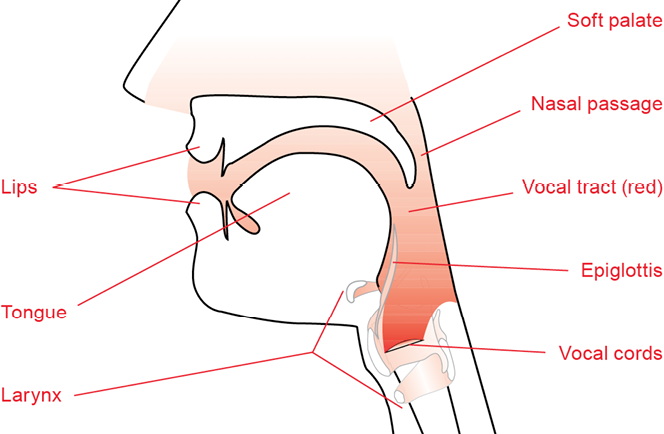Some singers are «the less I know – the better I sing» people – and I love them for it. One of my favorite singers in Les Miserables was like this. He just sang, and sang – so breathtaking and wonderfully – night after night with great success and to standing ovation. Though, every time somebody asked me about a vocal chord issue or like best vowels for belting, he just ran from sight like it already was the third battle in second act. He just did not want to know. Gosh – I love him for it, and in some way I am also quite jealous. Singing is something magical, something mysterious and something not always explainable. E.g. if I am working technically with a singer and their voice suddenly «click» into center – I get goose bumps on my under arms. But if they are singing something that clicks with me emotionally, I get goose bumps on my shoulders and upper arms. Strange huh? But I promise you – every time! Well, magic aside, unfortunately these truly “intuitive” singers are often outnumbered by singers who meet obstacles in their artistic road trip. Singers, stamping in mud – saying «I do not understand why this just doesn’t work» or «why can I not just do this?» Therefore it is so important to choose the right method for the right person when it comes to singing. Some need to know a lot of nerdy, some needs to just sing it.
In my singing training the «language of smelling flowers» was a big hit. It was a wonderful language – if you knew what was lying beneath it. It is a very creative language and often a cool one. But for me, as a very logical person, it just didn’t help. I needed to know what worked and what didn’t. I needed to know which muscles where on my side, and who where selling me for a dime on the side walk? Did I lack twang? Did I have too low of a larynx? Did I lock my support or was there actually something wrong with my vocal chords? But ever too often I was left with metaphors and symbols, which sometimes work and sometimes not. I think that is why I have dedicated so much of my singing becoming a vocal geek. I truly believe that every singer has a right to know what is going on in their voice, if they need and want it. Therefore – this piece is about your vocal tract and choosing your own sound!
We are very used to talk about our voices in certain ways. We all say «I have a voice like this, or this or my voice is this or this». «My voice is full of vibrato, it is a classical voice» or «My voice is breathy – so I should sing jazz». etc. But as a voice teacher I would urge you to quit talking that way. It is so much more efficient to say “My voice does this or this”- because we a very large possibility to change the way our voices sound. One ground rule of singing is: every time we change the muscular set up in our voice it changes the way we sound. And we has endless possibilities to change this set up. One way is to make the space in our vocal tract bigger or smaller. Try clapping your hands – with flat hands the sound becomes quite light, if you clap with more space between your palms, the sound becomes darker. The same is for our voice. A smaller space in our vocal tract makes a lighter sound color, a bigger space makes it darker. If I were to sing Defying gravity, I would probably make my set up a bit lighter (but not as light as f. Ex Popular from the same show), If I were to do mister Snow from Carousel though, I would probably make it a bit darker. We have six places where we can change our sound color. We can raise or lower our larynx, we can broaden or compress our tongue, we can broaden or round our mouth opening, we can open or close our nasal passage, we can twang more or less and we can relax or lift our soft palate. The really cool thing is that we can mix all of these elements. It’s like a mixing table, we can add some lightness or some darkness, or make it all light or all dark. We can make our own cocktail or drink mix to go. My favorite sound these days (in my own voice of course) is a mid larynx, quite some twang, a more relaxed soft palate, a broadened tongue, a rounded mouth and a closed nasal passage – ha, you would like to know how that sounds, wouldn’t you! Try out for your self! I could have chosen differently – but this is my taste in my voice. This is what I want my voice do and what I want to build into my muscle memory. (Puh! Ten new blog posts needed for explaining all these terms – ha?).
Sometimes a certain set up is needed for securing good vocal health. I remember my classical teacher spoke about «squillo». «You have to add some «squillo» to your voice to make it heard over the orchestra» she cried too many times. I don’t know if I got it then – but now I know that my classical set up on (lowered larynx, raised palate, closed or semi closed nasal passage, round mouth opening and compressed tongue) need quite a significant amount of twang to be both heard and healthy. It is so cool that we can impact these things. Sometimes everything is working – but then we need to sprinkle some gold on top of it – and it all falls into place.

(Picture copyright: Complete Vocal Institute https://completevocal.institute/complete-vocal-technique/)
When we as singers talk about different voice qualities or vocal modes we talk about the sound outcome of a certain set up, setting or shape in our vocal tract. The acoustic set up in our vocal tracks enhances or suppresses different overtones that we can clearly recognize and also categorize with our ears. The different setting also affects the way our vocal folds vibrate, they can have a different vibration patterns or e.g. have longer or shorter closing phases in every vibration. And they influence our air flow and the way our support muscles work. Different schools of different singing techniques have different ways of categorizing their vocal modes or vocal qualities. I am trained from the Danish Complete Vocal Technique, where Neutral, Curbing, Overdrive and Edge are the four categorizations. The sounds are differentiated by their degree of clear or restrained metallic sounds. If you are trained in the USA though – you may probably be more used to an Estille way of thinking with voice qualities such as speech, cry, sob, opera and belt amongst others. I think it is important that we as singers communicate across these schools and boarders, it is not easy, but we have to. When I teach, I do not care if my students call things Medium Edge, Strong Mix or Green Frogs for that matter, as long as we can agree on what sound goes with the term. This of course is a big challenge for us teachers – but I think it is so important we try to understand our colleagues way of thinking instead of dismissing it. And maybe in the future we will agree on a common singing language. (Ha, ha – the chance of that is probably like a sparkling unicorn falling on my in the coffee shop where I am sitting right at this moment. But I am an optimist by heart – we just need to talk, talk, talk. And yes – most of all listen).
The most important thing I want to say to you in all this is that we all have the same muscles, so we can all produce these qualities or modes, or different spaces in our vocal tract. “But hey – wait a minute” you are probably saying to you self right now – but what about my own personal sound – I don’t sound or want to sound like someone else. Well – that is maybe the magical part? Even though our muscles have the possibility to work in the same way, we are all born so different. So even when we do the same things, it will sound kind of different. The thickness and lengths of our vocal chords are different, the shape of our mouths are different, our nose cavities are different, our hight, length and broadness are different. But most of all – our taste is different. Therefore I think it is so important to brake vocal technique into small building blocks, so that we can put them together the way we want to. So go to work singer – change the shape of your vocal tract – and have fun with it. Maybe then both my under arms and my upper arms will get goose bumps by listening to you?
Ps! You want to know something funny – the more I know about the voice, about the more of a imaginary person I become in my teaching. Ironic huh? If you come to a lesson with me, we will probably talk a lot about jelly fishes, honey, washing windows, or stabbing people with knives. Curious how these pictures help your singing? Book a lesson – and then I will show you. And I if you want to – I will explain it to you as well. Welcome!
And PS2! If you are what I called an “intuitive” singer in this piece – I of course know you can stamp in mud too – but I just wanted to honor the way you take care of the magic of singing – cause sometimes I forget…


0 Comments
Leave A Comment